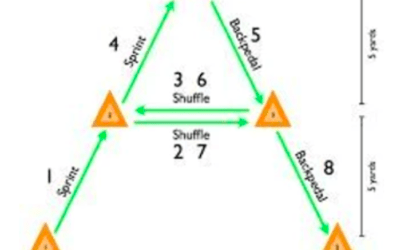Our hockey guru, Claire Davidson shares some of her top tips for injury-free hockey.
As the hockey pitches start to re-open the temptation is there to make up for the lost time and try to do too much too soon. After a period of time away from the game, the risk of injury is much greater, even if we have been keeping up with running. During an average hockey game we will probably cover approximately 7-10km per game, but much of that is spent at low speed with intermittent explosive bursts of acceleration and deceleration with rapid changes of direction. These bursts of activity require power and strength and burn more calories than a steady pace run over the same distance. Evidence suggests that doing repeated 5 or 10 km runs will not adequately prepare you for hockey so time to change it up and train for the sport we play.
When you got out running, mix up the speed and introduce some sprint intervals once you are warmed up. Find a local field and mark out 100 yards at 25-yard intervals. Run 25 yds and back, 50 and back , 75 and back and then 100 and reverse back to 25 starting half pace moving on to 3/4 and finally sprint as able. Time yourself and see if you can improve your time each week.
Choose routes that are quieter so you can maintain social distancing or choose times that are less popular. You should not need a mask and there is some concern that wearing a mask means you might not be able to breathe as effectively.
Add circuit training 30 mins x 2 weekly. There are hundreds to choose from online but start gradually if you are not used to it. FITISM is offering a free 14-day trial to their classes so worth signing up on facebook.
Starting with around 10 different exercises progressing to 15
Start with 30-sec on with a 30-sec rest
Repeat full circuit x 2 with 2-minute rest between each circuit
As you get stronger, you can introduce harder and more demanding exercises such as star jumps and jumping jacks for plyometric based training which may improve sprint speed. Reduce the rest period down or increase the exercise time down per circuit to make the workout more challenging.
To improve change of direction speed and agility, creating fun drills in the garden by laying down cones or hockey balls in diagonal patterns and on the grass and sprint between them picking them up and putting them down. Watch out for our next blog on how to test your agility.
Alternate quick bursts of sprints with some strength related drills such as crawling, side planks, press-ups, and squats or lunges. See our social media pages for some great ideas.
All of the circuits can be interchanged the more family participants the better!
Skills with hockey balls actively encouraged!!
Have fun and stay safe.
